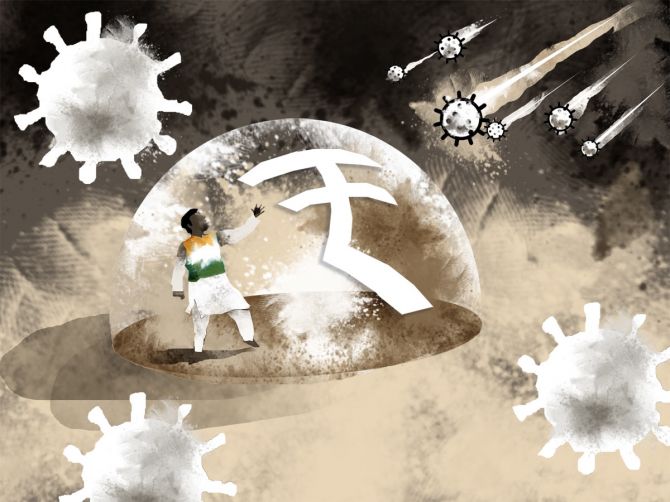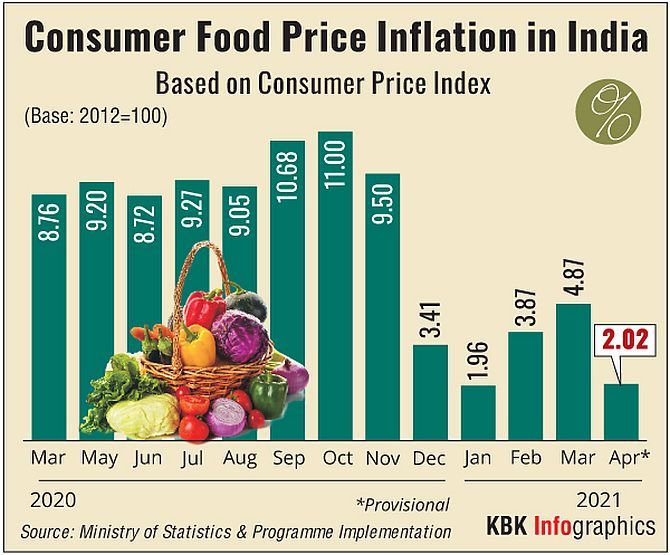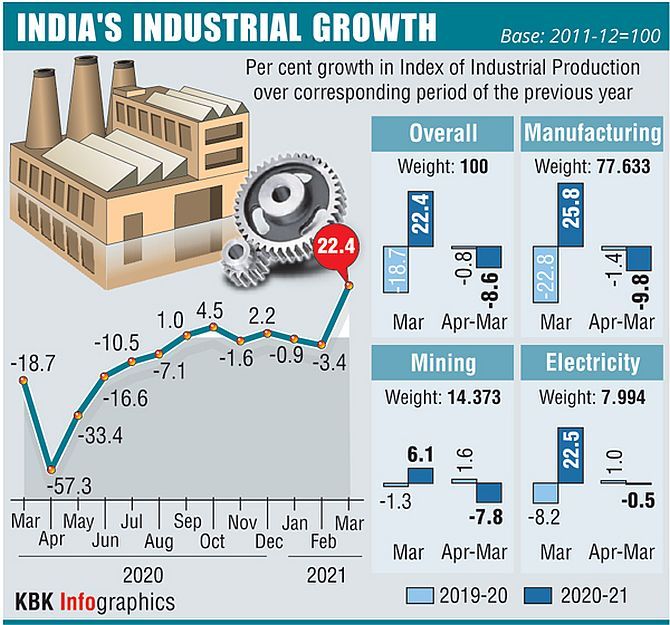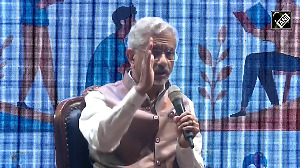India's factory output climbed 22.4 per cent in March, benefiting from the base effect of the lockdown-marred month a year back as well as a turnaround in the manufacturing sector, while retail inflation slipped to a three-month low of 4.29 per cent in April.

The high positive annual growth in the index of industrial production (IIP) in March 2021 came on back of a contraction of (-)0.9 per cent and (-)3.4 per cent in January and February 2021 respectively, according to the data released by the National Statistical Office (NSO) on Wednesday.
This turnaround was led by recovery in the mining, manufacturing and electricity sectors.
Also, it benefited from the base effect as most parts of the country were under lockdown in March 2020 and the IIP gauge had recorded a massive contraction of (-)18.7 per cent.
The CPI inflation moderated from 5.52 per cent in March 2021 to 4.29 per cent in April 2021, driven particularly by a deflation in vegetable prices of 14.2 per cent on a yearly basis which pulled down the food inflation significantly.
While cereal prices fell in line with real time data unlike in some of the previous months, some categories in the food basket such as meat and fish, edible oil, fruits and pulses continue to show high inflation both on a year-on-year and sequential basis, reflecting structural supply bottlenecks that might have got further aggravated by the fresh disruption brought in by the second COVID-19 wave.
Besides, core inflation continues to be firm due to the cost push factor triggered by higher retail fuel prices.

"There is clearly a risk of a further increase in retail prices due to the re-emergence of supply constraints from COVID 2.0 lockdowns but the base effect may help to moderate the inflation print even if there is a sequential uptick," said Suman Chowdhury, chief analytical officer, Acuite Ratings & Research.
Rumki Majumdar, economist, Deloitte India, said upside risks to inflation are significant because of rising global commodity prices, including crude oil prices.
At the same time, rising transportation expenses due to intermittent lockdowns and shipping rates will also add to input costs.
"Inflation is expected to sharply increase once the economy returns to the recovery path. Uncertainties have resulted in the postponement of capital spending and investment, which will translate into supply constraints in the near term.

"Post recovery, pent-up demand is expected to rise sharply and result in demand-push inflation, thereby, limiting RBI's ability to maneuver monetary policy," she said.
On IIP, Chowdhury said the gross generation of electricity in FY21 almost reached the levels in FY20 despite the lockdown driven disruption, implying that higher residential power demand largely offset the drop in demand from industrial and commercial activity.
"While there is a broad based uptick in manufacturing on a year-on-year basis due to the base effect, there has been a heightened activity in the export driven sectors and particularly refined petroleum products in March 2021.
"However, the sustainability of an uptrend in manufacturing is clearly in question due to the expected disruption caused by COVID 2.0 in April and May 2021.
"The YoY figures may not be meaningful to analyse at this point and we need to look closely at the sequential data," he said.
The manufacturing sector -- which constitutes 77.63 per cent of IIP -- grew by 25.8 per cent in March 2021, NSO data showed.
The mining sector output too grew 6.1 per cent in March, while power generation increased by 22.5 per cent.

The Consumer Price Index (CPI) based retail inflation stood at 5.52 per cent in March. Food price inflation eased to 2.02 per cent in April from 4.87 per cent in the preceding month.
According to the data released by the Ministry of Statistics and Programme Implementation, the rate of price rise in the vegetables basket was (-) 14.18 per cent on an annual basis, sugar and confectionery (-) 5.99 per cent and cereals (-) 2.96 per cent.
CPI inflation had edged up to 5.5 per cent in March 2021 from 5 per cent a month ago on the back of a pick-up in food as well as fuel inflation, while core inflation too remained elevated.
Aditi Nayar, chief economist, ICRA Limited, said given the high base related to the supply disruptions seen during the nationwide lockdown in April 2020, the CPI inflation dipped to a three month low in April 2021, while printing somewhat higher than the expectations.
Overall, the prevailing localised restrictions appear to have had a limited impact on prices in April 2021.
"As the lockdown base fades away, we expect the CPI inflation to bounce back to an average of 5 per cent in the remainder of the first half of fiscal year 2021-22, ruling out the possibility of further rate cuts to support economic activity and sentiment.
"However, with the economic outlook remaining uncertain in light of the continuing pandemic, we expect the monetary policy stance to remain accommodative for much of 2021," she said.
The government had refrained from releasing the comprehensive retail inflation data for April 2020 as the nationwide lockdown prevented officials from collecting price data at various centres.
A lockdown was imposed in the latter part of March 2020 as the COVID-19 pandemic started spreading.
RBI, which mainly factors in the retail inflation while arriving at its monetary policy, had left the key lending rate (repo) unchanged last month on inflation concerns.
Earlier this month, RBI Governor Shaktikanta Das had said that going forward, a normal south-west monsoon, as forecast by the IMD, should help to contain food price pressures, especially in cereals and pulses.
The build-up in input price pressures across sectors, driven in part by elevated global commodity prices, remains a concern, he said.
The inflation trajectory over the rest of the year will be shaped by the COVID-19 infections and the impact of localised containment measures on supply chains and logistics, Das had said on May 5 while announcing measures to help the economy amid the second wave of the pandemic.











 © 2025
© 2025